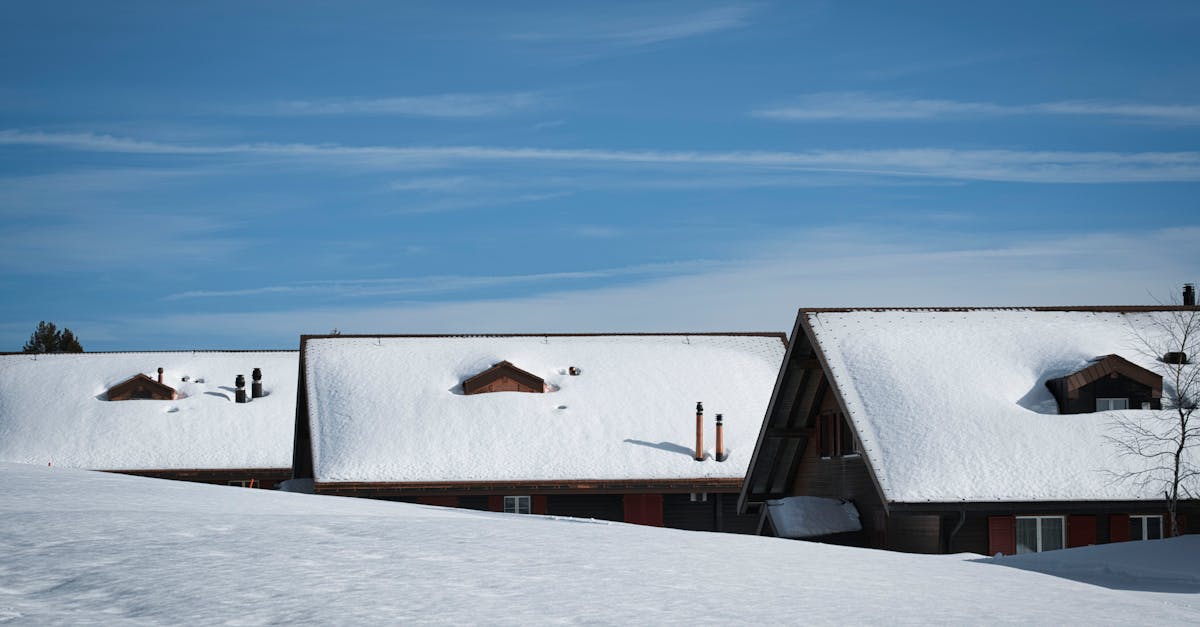Ever thought about transforming your home’s efficiency in just seven days? Imagine achieving that with a cool roof. This straightforward upgrade can make your home more comfortable while slashing energy bills. You’ll love how reflective roofing can drastically reduce heat absorption, especially during the blazing summer months. Curious how it all works? It’s simple—by bouncing sunlight away, energy-efficient roofing minimizes the heat entering your home, cutting down your reliance on air conditioning.
Feeling skeptical about the impact of a roof? Consider this: urban heat islands see a significant temperature reduction with eco-friendly roofs. Installing a cool roof involves using materials like UV reflective coatings and cool colored tiles, which dramatically boost solar reflectance. These options not only lower your energy use but also help decrease your carbon footprint. You’ll find that cool roofs reflect and transfer less heat, which means more comfort inside your home.
Ready to make a sustainable change that saves you money? Dive into the world of cool roofs and discover which cool roofing material suits your needs. Embrace the shift to a more efficient, eco-friendly lifestyle. Your journey to a cooler, more energy-efficient home starts here.

Photo provided by Nadine Wuchenauer on Pexels
Throughout the story
- Benefits of a Cool Roof
- Understanding Reflective Roofing
- Day 1: Evaluate Your Current Roof
- Day 2: Choose the Right Cool Roof Coatings
- Day 3: Calculate Potential Energy Savings
- Day 4: Install UV Reflective Materials
- Day 5: Address Urban Heat Islands
- Day 6: Maintain Your Cool Roof
- Day 7: Evaluate and Optimize
Benefits of a Cool Roof
When you choose a cool roof for your home, you can enjoy several benefits. First, it significantly reduces energy costs. By reflecting sunlight, less heat is absorbed, which means your home stays cooler. This leads to energy savings on air conditioning. You can keep your home more comfortable without cranking up the AC.
Second, a cool roof improves indoor comfort greatly. You won’t have to deal with hot, stuffy rooms anymore. The roof reflects sunlight, keeping the inside temperature much cooler. Lastly, it efficiently enhances the lifespan of your roof. Because the roof is not exposed to intense heat, it experiences less wear and tear.

Photo provided by Nicolas Veithen on Pexels
Understanding Reflective Roofing
How Reflective Roofing Works
Reflective roofing uses UV reflective materials efficiently. These materials are designed to bounce back the sun’s rays, reducing the amount of heat transferred into your home. By doing this, you can cut down on the heat that your roof absorbs and make it easier to maintain a comfortable indoor temperature.
Reflective Options
There are several reflective options to consider for your roof. You might look into reflective shingles and tiles, which are designed to reflect a high percentage of sunlight. These materials are not only effective but also come in various colors and styles, so you can choose something that fits the look of your home.

Photo provided by Sergio Zhukov on Pexels
Day 1: Evaluate Your Current Roof
On the first day, start by evaluating your current roof. Inspect for damage or wear, such as missing shingles or leaks. This assessment helps determine if your roof needs repairs before installing a cool roof.
Then, assess your roof’s current energy efficiency. You might look for any areas where heat is getting through, as these spots might need extra attention.

Photo provided by Faheem Ahamad on Pexels
Day 2: Choose the Right Cool Roof Coatings
On the second day, consider your options for cool roof coatings. These coatings can enhance your roof’s reflective properties. Make sure to choose coatings that are compatible with your existing roof materials.
Research different brands and types of coatings. Some might be more suitable for your climate or roof type. Take your time to pick the right one to get the most benefit.

Photo provided by Faheem Ahamad on Pexels
Day 3: Calculate Potential Energy Savings
On the third day, calculate the potential energy savings you could achieve. Estimate the benefits of switching to energy-efficient roofing. Consider how much you spend on air conditioning now and how much less you might spend with a cool roof.
Factor in reductions in thermal emittance as well. A cool roof not only reflects sunlight but also releases stored heat more effectively, which contributes to more savings.

Photo provided by Jay-r Alvarez on Pexels
Day 4: Install UV Reflective Materials
Day four is the day to install UV reflective materials. Select high-quality UV reflective materials for the best results. Ensure proper installation for maximum efficiency and to avoid any future issues.
Make sure the materials you choose have a high solar reflectance number, indicating they are effective at reflecting sunlight.

Photo provided by Sergei Starostin on Pexels
Day 5: Address Urban Heat Islands
On day five, consider how your new roof can affect urban heat islands. In cities, areas with lots of pavement and buildings get hotter. Cool roofs reduce this effect by lowering the overall temperature in your neighborhood.
Plan for mitigating heat effects. By helping to reduce urban heat, you not only improve the comfort of your home but also contribute to a cooler city environment.

Photo provided by Faheem Ahamad on Pexels
Day 6: Maintain Your Cool Roof
On the sixth day, focus on maintaining your cool roof. Regularly clean and inspect your roof for any issues. Dust and debris can reduce the reflectiveness of the roof, so keeping it clean is crucial.
Check for damage or coating wear. If you notice any spots where the roof coating is wearing away, address these issues right away to maintain efficiency.

Photo provided by Salih Zeqiri on Pexels
Day 7: Evaluate and Optimize
On the final day, evaluate and optimize your cool roof system. Review the energy savings and comfort improvements achieved over the past week. Check how much less energy you have used and how much cooler your home feels.
Adjust your practices for enhanced performance. Maybe you need to change the way you use your air conditioning or improve how you maintain the roof. By making small tweaks, you can maximize the benefits and enjoy a more energy-efficient home.
Embrace a Cooler, Greener Home
Maximizing your home’s efficiency doesn’t have to be complicated. By introducing a reflective solution to your roof, you help lower energy bills and reduce your environmental impact. This simple change offers better temperature control and comfort inside your home. Plus, you’ll contribute to lessening urban heat islands, creating a healthier community.
Start your journey by exploring different eco-friendly roofing products. Look into options that fit your style and needs. Consult with a local expert to find the best fit for your home. They can provide insights on installation timelines and the benefits of each material. By taking these steps, you move closer to a more energy-efficient home.
Why wait? Reach out to a roofing specialist today and begin your path to a greener, cooler living space. It’s time to take action and make a positive change in your home and environment.
